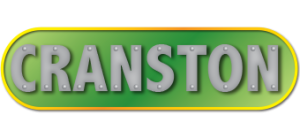What Are the Different Types of Pallet Racking? Which works best for my Location?
Whether you are looking to expand your current warehouse or build a new warehouse to grow your operations, one major decision will what type of racking you need to install to best meet your needs. Pallet racking, in simple terms, is a material storage system that is used to help you better manage your materials or products and keep your warehouse organized.
Determining the Type of Pallet Racking You Need
Finding the right pallet racking system to meet your storage needs is not as simple as picking a type and having it installed. When you are trying to determine the best pallet racking for your warehouse, you should consider the following criteria:
- What materials or goods will you be storing?
- What will the floor plan of the warehouse be?
- What types of forklifts do you use now or what type will you be switching to?
- How tall do you need the racking to be?
- What type of inventory management system will work best for your product and operations?
Types of Pallet Racking Available and Their Applications
Push Back Racking
This is a high-density storage option that works by placing pallets on nesting carts that glide back on rails. This type of racking can store from two pallets up to six pallets deep on either side of the aisle, with three carts stacked on top of one another. This type of racking works by loading the first pallet in the front, which sits on the top cart. The second pallet is then loaded which pushes the first pallet back, making it great for last-in-first-out inventory.
This type of racking requires fewer aisles, reduces picking time, and doesn’t require a special lift to use, making it an excellent option for general warehousing and retail.
Drive-in Racking
Cantilever Racking
Pallet racks can limit the weight and length of items stored due to their vertical uprights. If you have inventory that cannot be easily stored on pallets, cantilever racking can be used. This type of racking is best suited for items that are heavier or longer, such as steel pipes. The items are stored horizontally across multiple arms in the rack.
Selective Racking
Professional Racking System Design and Layout Services
At Cranston Material Handling, our team has decades of experience providing high-quality pallet rack systems and material handling solutions to warehouses. We can evaluate your facility and help you find ways to better utilize your space and increase efficiency.








